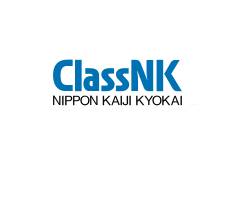ClassNK Establishes New Standards for FLNG/FLPG Sector
Society releases new Guidelines for Floating Offshore Facilities for LNG/LPG Production, Storage and Offloading
April 28 (Tokyo) - Nippon Kaiji Kyokai (ClassNK) is pleased to announce the publication of its new Guidelines for Floating Offshore Facilities for LNG/LPG Production, Storage and Offloading. The new guidelines address the wide variety of construction and survey requirements for FLNG and FLPG facilities including LNG/LPG Floating Production, Storage and Offloading facilities (FPSO), Floating Production and Offloading facilities (FPO), and Floating Storage and Offloading facilities (FSO).
Although the FLNG sector remains in its infancy, the sector is expected to grow rapidly in the near future, and ClassNK has released these new guidelines to address that growing demand. “Ongoing environmental and logistical concerns related to onshore gas production have helped spur new interest in offshore LNG and LPG projects,” says ClassNK Natural Resource and Energy Development Project Team Leader Hirofumi Takano. “With several of these projects entering the design phase, there has been a growing need for clear technical guidelines for the construction and survey of offshore gas facilities, and these new guidelines are an important step in that process.”
Due to their highly sophisticated nature, offshore gas facilities have primarily been evaluated on a project by project basis, and there has been a lack of clarity about which class rules need to be applied, a factor which these new guidelines address. “For example,” says Toshiyuki Shigemi, General Manager of the ClassNK Development Department, “LNG FPSOs fall under both the scope of the our rules for FPSOs developed in 2009, as well as our rules for vessels carrying gas in bulk. With these new guidelines, however, we’ve a created a single reference for all the rules that apply to floating gas facilities.”
More than just a compilation of existing rules however, the new guidelines also incorporate a number of requirements exclusive to offshore gas facilities. “As floating structures, the design environmental conditions and mooring system are of great importance, so we’ve included complete information on analysis of environmental conditions and mooring systems, as well hull structural requirements, in our guidelines.” The guidelines also cover the wide range of other rules and requirements that apply to such structures, including rules for production machinery, piping arrangements and other equipment to be outfitted.
The release of the Guidelines for Floating Offshore Facilities for LNG/LPG Production, Storage and Offloading, follows closely on the official establishment of ClassNK’s Natural Resource and Energy Development Project Team in February. “With this new team, we have brought together ClassNK’s top experts from both the LNG and the offshore sectors, and these guidelines are the first result of our increased commitment to this growing sector,” says Mr. Takano.
The new ClassNK Guidelines for Floating Offshore Facilities for LNG/LPG Production, Storage and Offloading can be downloaded from the ClassNK website at the following URL:
http://www.classnk.or.jp/hp/Rules_Guidance/Guidelines/flng_e.pdf)
Source: ClassNK












